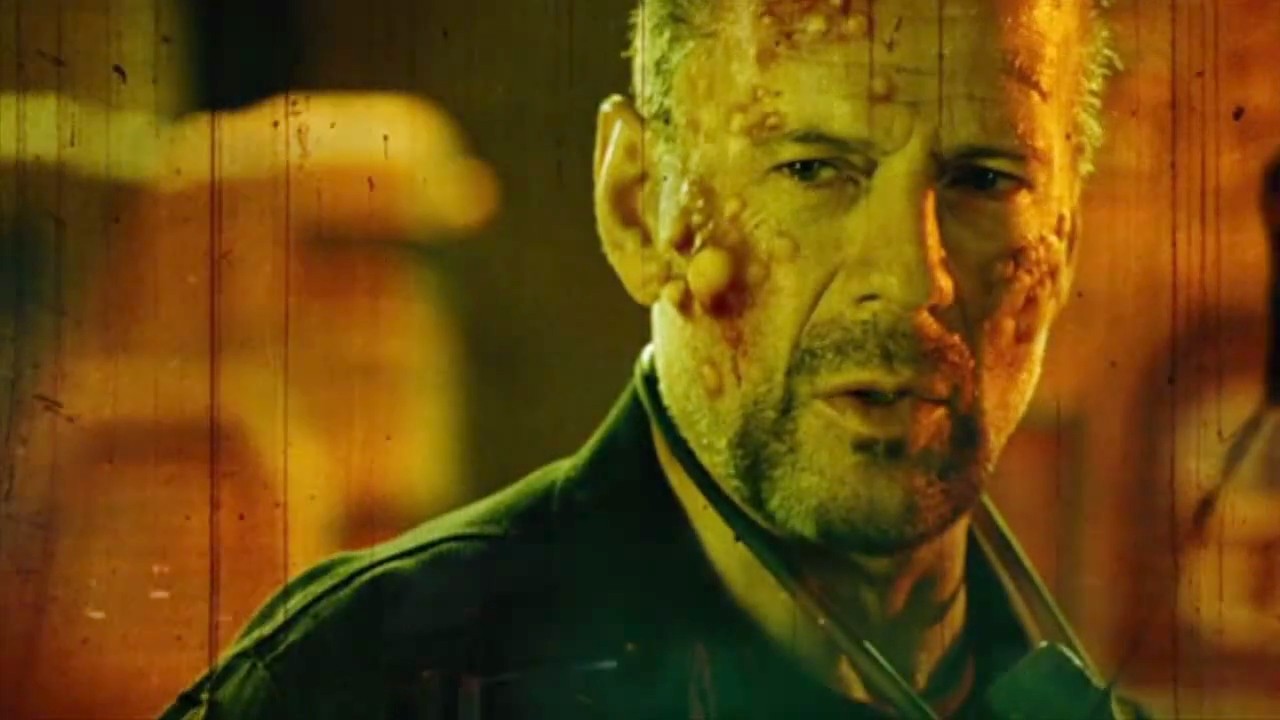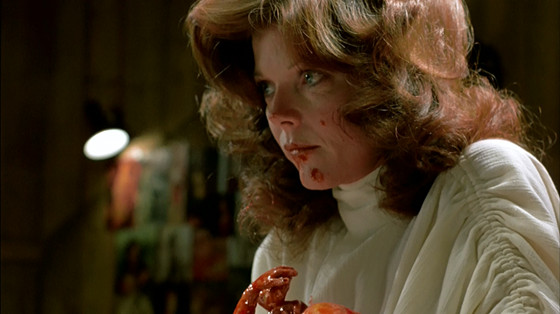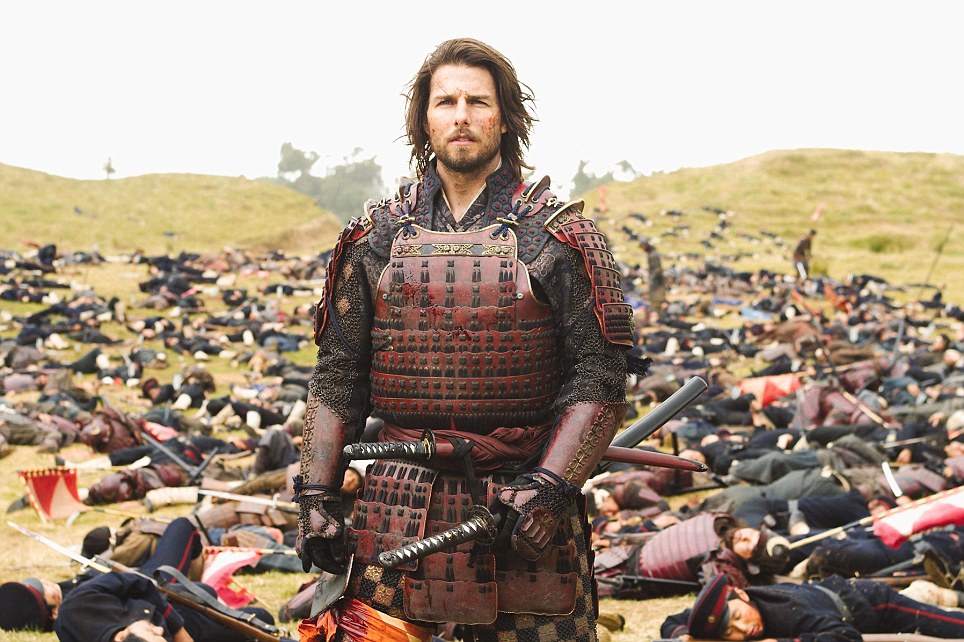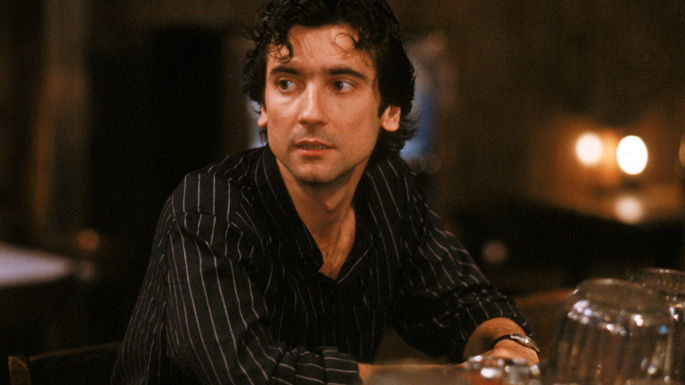6. Planet Terror (2007) – Robert Rodriguez
There is magic in performing silly acts and delivering lousy lines in a very serious and emotional way. Although his main purpose seems to be amusing himself, Rodriguez also shows us our fragility in a made-up world.
Call it a comedy with a David Lynch twist, if you will. Showing the fragility and the absurdity of the behaviors accepted as the normal help you in more ways than one. First of all, it frees you from the necessity to conform to a particular behavior pattern. Then, you come to realize that the behavior pattern you are viewing is only one of many other possibilities.
Finally, it teaches you the value of free thinking, taking responsibility, making a choice and then, dealing with its consequences. You don’t have to be a pawn in someone else’s game. Though we may never grasp the big picture, we can understand our place in the scheme of things. When the dominant theme of a movie is forced upon you, if you don’t reject it immediately, you will begin to operate in its borders.
The way exaggeration used in the movie helps us immediately reject whatever theme we are subjected to easily. For example, when El Wray meets his long lost love, Cherry Darling, we cannot take the encounter seriously. Because it is exaggerated and as a result of that, it becomes funny. Perhaps, this scene can also be viewed as a commentary about taking such romantic scenes too seriously.
When you get the hang of it, you may begin to see similar attitudes in real life as exaggerated and silly. This way of looking at things may eventually help you to get a better understanding of your culture. You may turn into an easy going, more likable version of yourself. I think humor belongs in everywhere and sometimes it is the only way that helps us to see the truth.
7. The Brood (1979) – David Cronenberg
Some say whoever we will become is imprinted on us during the first couple of years of our lives. We can never undo these experiences. Most of the time we don’t even understand why we behave that way or this way. Because the roots are quite old and very well hidden. Take me for example, for a reason unknown to me, I’m attracted to ladies who look like Myriam Cyr (Claire Clairmont in Ken Russell’s movie Gothic, 1986). I may be a reasonable guy other times, but when such encounters take place I lose all reason.
Which part of our character makes us who we are? Is it the unreasonable side that we can never change or is it the reasonable side we can change and improve? I think it’s both as long as we are not lost in either one’s labyrinths.
In this movie, we witness Nola Carveth’s sad childhood experiences materializing in the real world and taking revenge at every convenience. You may see it as her experience dictating the way she takes place in the story. When a stimuli that triggers these memories is presented to her, she behaves more like a puppet. Other times, she looks very intelligent and in control.
This movie also attempts to show us how we can heal these scars. Dr. Hal Raglan tries to help his patients by first having them describe these childhood memories in detail and then making them face these memories as adults. Although what’s kept hidden inside can have devastating consequences for that person, when we finally realize what it really is, it usually turns out to be a rather trivial matter.
Perhaps, the doctor is trying to take his patients to a level close to his where they can become observers too. Then, by analyzing what they have taken out of their system, they can understand it (see it for what it is), and then, let go of it.
Is it that easy, though? Just by understanding the reasoning behind our preferences, can we begin to control ourselves? Doesn’t it seem highly unlikely to you too? Perhaps, this is just the first step in the right direction, nothing more.
8. The Last Samurai (2003) – Edward Zwick
In Joe Versus the Volcano (1990) Joe Banks says that “courage interests him.” Samurais portrayed in this movie are interested in courage too, regardless of the person who’s displaying it. In the end of the movie when Captain Nathan Algren and Lord Moritsugu Katsumoto’s men gladly take part in a deadly endeavor with zero chance to win, we feel butterflies in our stomachs. It’s not sympathy. It’s the excitement that comes with the acknowledgement of the greatness of what they do.
Thinking about this scene, we understand that greatness is achieved only when you really take a risk. There are numerous ways to achieve that. Some quit their day jobs and write books, others come up with chemical formulas after working on the same problem for thirty years, but only a handful of men/women take it one step further and risk it all.
This is different from being a soldier in a warlike state. Forget about the causes being right or wrong, and take a look at it this way. In some cultures, the amount of risks taken weighs more than the number of people killed from a distance while having a conversation with your pals (American Sniper, 2014). In this regard, The Last Samurai is the perfect antidote to Eastwood’s movie.
If we follow this example, we would find ourselves trying to perfect whatever we do all the time, because we are inclined to live in dire straits and we want to be ready when the time comes. Indeed, the ability to perform well in such circumstances is the only success criteria.
Perhaps, that was the main reason why William Edwards Deming (1900 – 1993), an American statistician famous for his ideas about quality and management, was first recognized for his abilities in Japan, not in his own country. We may go ahead and say that adapting to the status quo and performing as well as the others was not good enough for the Japanese. So, once again they took the long way home and tried to do the unthinkable.
9. Bram Stoker’s Dracula (1992) – Francis Ford Coppola
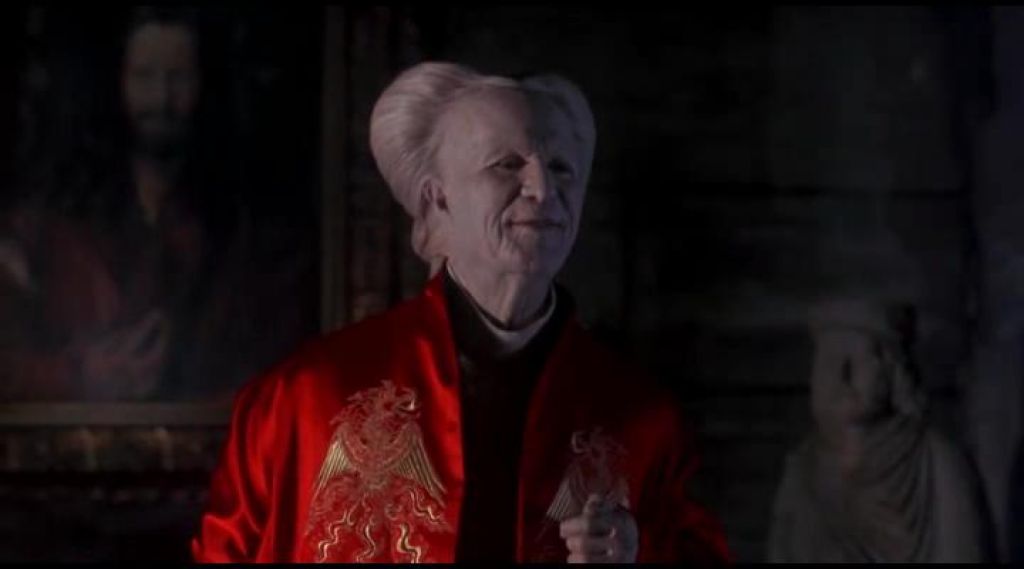
Haunted by his past, Dracula surprisingly doesn’t try to forget all about it, but instead he wants to be reminded of it constantly. His unholy powers are fed by these memories. He has his servants deliver the soil of his hometown (memories) wherever he goes. It gives him strength. He cannot be too far away from it or he becomes weak (loses vampire powers).
Also, he despises religion and its symbols such as the cross, which we may attribute to the untimely death of Dracula’s wife, Elisabeta. So, in one hand we have traumas and in the other small disturbances. What is the relationship between the two? When someone is very easily intimidated with small disturbances, he/she may also be susceptible to traumas.
Since traumas are life changing experiences, one develops close ties with them and consider them like family. Small disturbances, on the other hand, are those we can live without. In Dracula’s case, he keeps the horrible memories of his homeland close by, but cannot tolerate garlic. Too much fuss for someone who can turn into a bat, don’t you think?
Let’s try to make sense of it. Perhaps, what he was turned into can only be sustained by having strong stimuli around. Losing Elisabeta is crucial, because that was the reason he has denounced God. Since the reason of his curse and the powers he gained such as super human strength and immortality is one and the same, he can preserve his strength by keeping the original cause handy. So, by remembering what has happened he will sustain the result.
We see the same behavior in his feeding habits. Dracula doesn’t drink wine. However, while he does not consume a symbol (wine), he consumes what it represents (blood of Christ) with never-ending thirst. He cannot be fooled by the symbols. He is only after the real thing. Isn’t it ironic though, what he considers real is the love for her dead wife, not love itself (or unselfish concern for one another)?
If you have spent some time with microscopes, you know that there is a limit to the resolution of the device. In other words, after a certain point if you keep increasing the resolution (ability to see what can’t be seen), you will not get a better picture. You will get a worse one. Same thing applies here, as well.
Dracula can hear rats walking in the next building and he can sense that Mina is near when she is miles away, but he doesn’t have the slightest idea whether he is doing the right thing. With all these super senses, he is actually deaf, dumb and blind.
10. After Hours (1985) – Martin Scorsese
Almost twenty years ago, it was one Monday night. I was having trouble going to sleep and I had to get up early next day. I was swearing to myself saying: “I will never take a morning course again! I cannot even tolerate a computer class at that time of the day. Having a class at 8:30, and a philosophy class? What was I thinking? I had to be out of my mind at that registration.” Anyway, I began to ‘surf’ the TV stations. The movie at Channel 13 grabbed my attention. The name of the movie was After Hours. “Oh” I said “this better be about the babes.” It wasn’t.
Okay, I’m pretending to be serious now. Our ‘hero’, Paul Hackett meets this girl in a coffee shop late at night. She is very comfortable around this stranger, so he ‘becomes interested’ too. He gets her phone number and at home hoping to ‘get some’ he calls her. She says, “Come right away” at midnight. Our hero goes there.
This girl lives with a sculptor. At the moment sculptor ‘without any apparent reason’ is working on a statue that resembles a screaming human being. After a while she asks him to massage her back. As he massages her, he ‘tingles’ thinking about the possibility.
However upon his ‘move’ she just falls asleep. Again, I have to remark the reader that these are all ‘accidental.’ Bored, Paul checks out this weird house. Then, he hears a phone conversation. The girl who has invited him is very anxious about his visit. However, she comes ‘home’ eventually.
There they meet again. She shouts at him when she sees the sculptor laying there: “What did you do to her?” Our hero says “Nothing, nothing… I didn’t do anything to anybody!” For a while director plays with the concept of “pink glasses” (Only seeing what you are inclined to see as we have previously discussed). Then, we see our hero trying another move. I mean, poor guy has to get some, right?
Let’s skip the details and have a look at the end of the movie. This girl is dead and several people try to kill Paul thinking he is the thief they are after. Since the mob is very angry, Paul fears for his life and hides in a bar to survive the night. There is a lonely woman in the bar. The bartender says, “If you are going to make a ‘move’ you’d better be fast. We will close in ten minutes.” Our hero has changed dramatically, however. He approaches this woman. He says, “May I sit beside you. I need somebody to talk to.”
As the camera zooms in to get them both, we hear a jazz tune. The singer says, “Is that all there is to a fire?” They begin to dance. The woman, with great surprise on her face, says, “Why are you treating me that good?” Our hero says, “I want to live.” Later on, the mob begins to force the door. They want to check this place out too. The woman says, “Come with me.” They go into the basement and it turns out, this woman is a sculptor too.
Then, she turns Paul into a sculpture using the same method the sculptor we mentioned previously uses (Papier-mâché), so that she can save him. A couple of minutes later, we see Paul, safe and sound, but also trapped inside a sculpture that looks like a screaming human being. As we take a closer look, we realize that this is the only way to ‘live’ in this world.
Author Bio: Erol Bozkurt is a computer scientist who specializes in analysis, quality assurance and management. He is interested in movies with alternate meanings, because that’s what software developers do all the time, play with the meanings of things. Right now, he is living in Istanbul, Turkey and working as a consultant.
